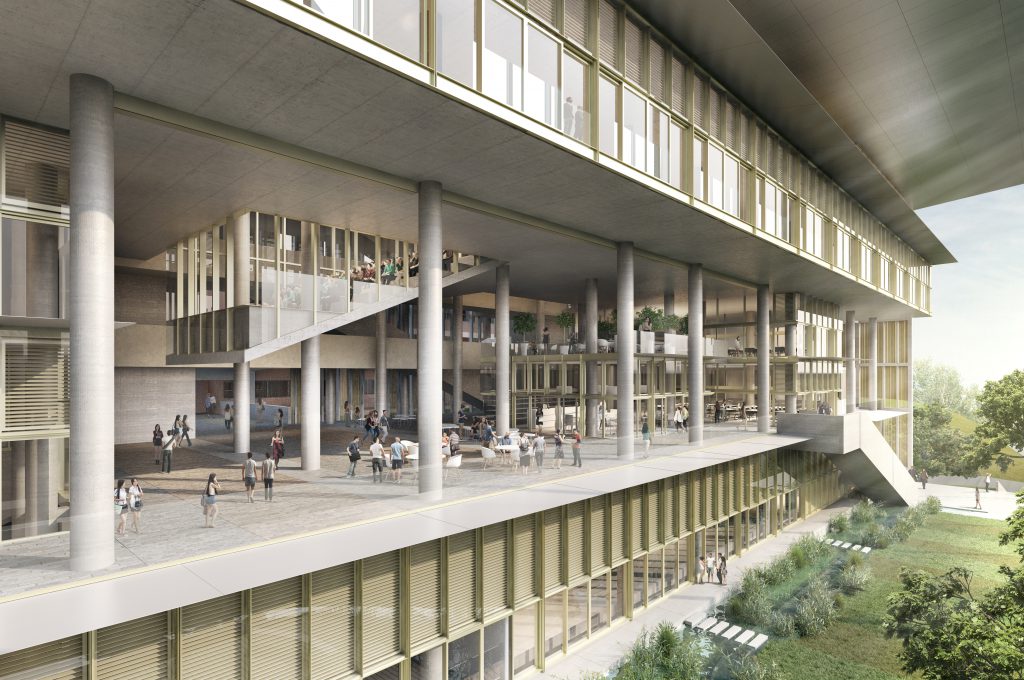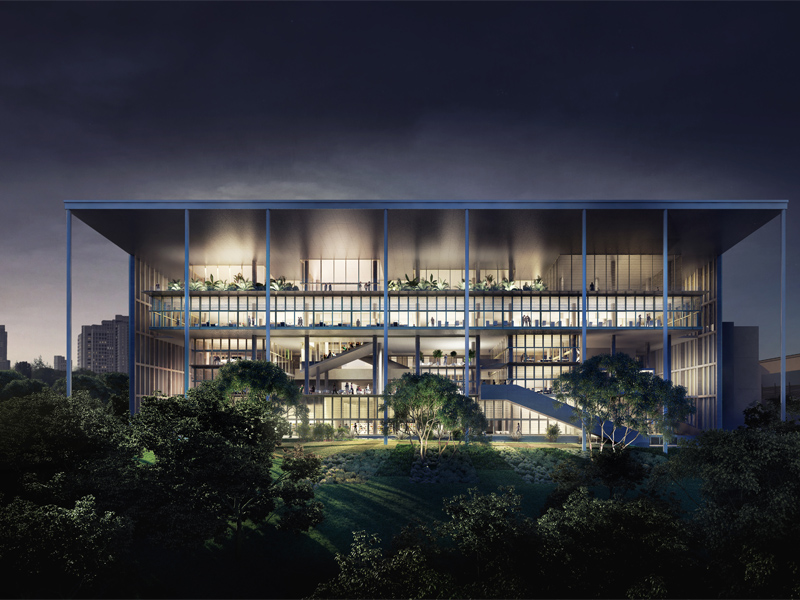
The new building, which will house teaching and research facilities, will serve as a living laboratory to promote research collaboration in sustainable building design
Singapore, 7 November 2016 - The National University of Singapore (NUS) today broke ground on a new sustainable building at the Kent Ridge campus - its first purpose-built Net-Zero Energy Building (NZEB@SDE). The groundbreaking ceremony of NZEB@SDE was officiated by Mr Desmond Lee, Senior Minister of State for Home Affairs and National Development.
Conceptualised by the NUS School of Design and Environment, the NZEB@SDE is designed to be climate-responsive with net-zero energy consumption. The six-storey building will feature a range of green building designs, such as harnessing solar energy, hybrid cooling approach, natural ventilation and lighting. .
Professor Lam Khee Poh, Dean of NUS School of Design and Environment, said, "This project marks a new chapter in our School's vision of learning, knowledge advancement and multidisciplinary collaboration. Many hours of discussion, design iterations and collaborative teamwork have gone into the design of NZEB@SDE, which will serve as a living laboratory to inspire our staff and students to explore innovative ideas as we continue to push the boundaries of sustainable design to build a green and resilient urban habitat for all to enjoy."
Modern Living Laboratory with Teaching, Research and Community Space
NZEB@SDE will be a new addition to the existing three buildings of the NUS School of Design and Environment. The new building, which will be completed in early 2019, will function as a living laboratory to promote research collaboration with public agencies and industry partners.
With a gross floor area of 8,514 square metres, it will house a mix of research laboratories, test-bedding facade, design studios, as well as teaching and common learning spaces. It will also include a 3D Scanning Laboratory, the NUS-JTC Industrial Infrastructure Innovation Centre and the NUS-CDL Smart Green Home.
Contemporary Tropical Architecture
One key aspect of the NZEB@SDE is its contemporary architecture design which demonstrates a deep understanding of the tropical climate of Singapore. The design concept incorporates a large overhanging roof, which together with the double facades on the East and West of the building, shade it from the sun's heat and provide a cooler interior.
The building design also makes use of the architectural concept of "floating boxes", where its shallow plan depth and porous layout allows for cross-breezes, natural lighting and views to the outdoors. Weather permitting, rooms can also be opened to natural breezes, and air conditioning is used only where it is needed, reducing the electricity usage of the building. The result is an architecture that seeks to offer a deeply biophillic experience that connects NUS staff and students to the campus' natural surroundings.

Net-Zero Energy Consumption and Greater Comfort
NZEB@SDE is also designed to consume only as much energy as it produces. This is made possible by harvesting solar energy using more than 1,200 solar photovoltaic panels installed on the roof. On days when there is insufficient solar energy, the building will draw energy from the power grid. Over the course of the year, the net amount taken from the grid will be zero - achieving a net-zero energy consumption.
Integral to the concept of net-zero energy consumption for NZEB@SDE is the need to rethink air-conditioning, which typically accounts for up to 60 per cent of a building's total energy load in a tropical country like Singapore. This resulted in the design of an innovative hybrid cooling system which ensures that rooms would not be overly-cooled. Rooms will be supplied with cool air at higher temperatures and humidity levels than a conventional system and this is augmented with elevated air speeds from ceiling fans. Coupled with NZEB@SDE's tropical architecture design, this creates a highly comfortable environment that is also significantly more energy efficient.
"The NZEB@SDE offers lessons to architects and engineers on how energy use and occupant comfort might be better balanced in future buildings. It also suggests that a building need not deliver the same conditions all day to everyone. Giving occupants the option to control comfort such as by adjusting fan speed, for instance, or switching to natural ventilation, would be viable solutions to achieve comfort. When the building is completed, we hope to use it to experiment various design concepts and approaches in partnership with our collaborators," Prof Lam added.





